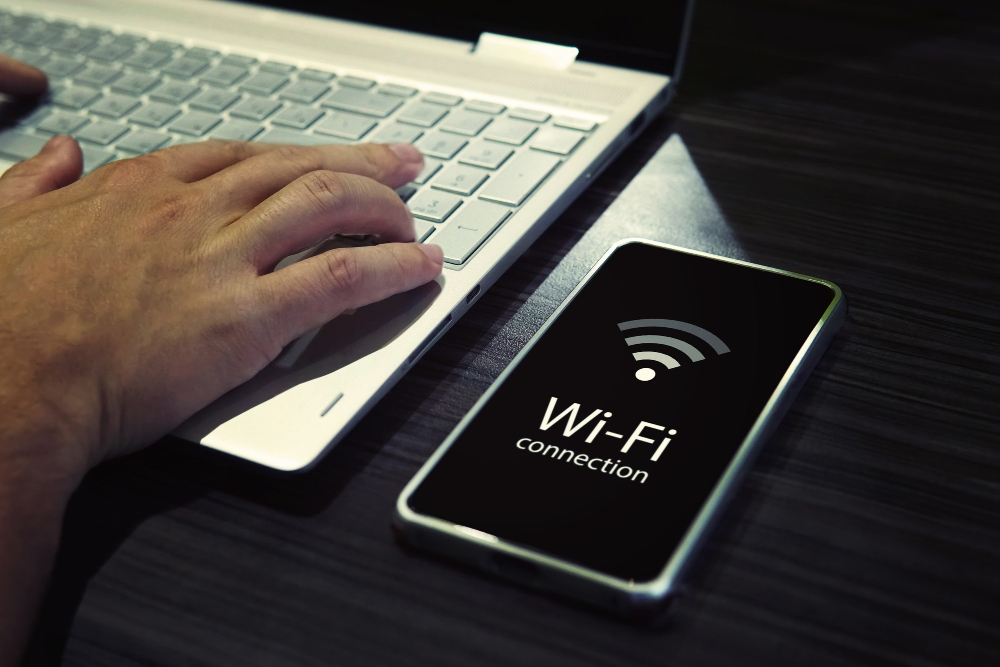Securing your Wi-Fi network is critical to protect personal data and prevent unauthorized access. One of the simplest yet most effective ways to secure your network is by regularly changing your Wi-Fi password. This step ensures that only trusted users can access your network, safeguarding your online activities from potential threats.
This guide will provide step-by-step instructions to help you change your Wi-Fi password effectively and discuss why it’s crucial for maintaining a secure network.
Why Changing Your Wi-Fi Password is Important
1. Prevent Unauthorized Access
Unsecured or poorly protected networks are easy targets for hackers or neighbors looking for free internet. A strong password limits access to authorized devices only.
2. Protect Personal Data
Once connected to your Wi-Fi, malicious actors can access sensitive information like passwords, bank details, and personal photos. Changing your password regularly minimizes this risk.
3. Improve Network Performance
Too many unauthorized users can slow down your internet speed. By updating your password, you ensure only legitimate devices use your bandwidth.
How to Change Your Wi-Fi Password
Step 1: Access Your Router’s Admin Panel
Your Wi-Fi router’s admin panel is the central hub where you can manage network settings, including the Wi-Fi password. To access it:
- Connect to Your Network: Ensure your device (computer, phone, or tablet) is connected to your Wi-Fi network.
- Find Your Router’s IP Address: Most routers use a default IP address like
192.168.0.1or192.168.1.1. This can typically be found on a sticker on the router or in its manual.- On Windows: Open the Command Prompt, type
ipconfig, and look for “Default Gateway.” - On macOS: Open System Preferences > Network > Advanced, and find the router address.
- On Windows: Open the Command Prompt, type
- Enter the IP Address in a Browser: Open a web browser and type the router’s IP address into the URL bar.
Step 2: Log In to Your Router
- Enter Your Credentials: Use your router’s default username and password, often listed on the router label. If you’ve changed these credentials, use your custom login details.
- Forgot Login Information? If you can’t remember, reset the router by pressing the reset button for 10–30 seconds to restore default settings.
Step 3: Locate the Wi-Fi Settings
- Navigate to Wireless Settings: Once logged in, look for options like “Wireless,” “Wi-Fi Settings,” or “Wireless Security.” These are usually under the main menu or settings tab.
- Select Your Network: If you have dual-band Wi-Fi (2.4 GHz and 5 GHz), choose the network for which you want to change the password.
Step 4: Change Your Wi-Fi Password
- Find the Password Field: Look for the “Wi-Fi Password,” “Pre-Shared Key,” or “Security Key” field.
- Enter a New Password:
- Strong Password Tips:
- Use at least 12–16 characters.
- Combine upper and lower case letters, numbers, and symbols.
- Avoid using easily guessable information like birthdays or names.
Example:Str0ngP@ssw0rd2025!
- Strong Password Tips:
- Save Your Changes: Click “Save” or “Apply” to update your settings.
Step 5: Reconnect All Devices
After changing your password, all devices previously connected to the network will be disconnected. To reconnect:
- Select your Wi-Fi network from the device’s Wi-Fi settings.
- Enter the new password.
- Repeat this process for each device.
Best Practices for Securing Your Wi-Fi Network
1. Use WPA3 or WPA2 Encryption
Encryption ensures that data transmitted over your network is secure. WPA3 is the latest and most secure protocol, but WPA2 is also widely used and reliable.
2. Regularly Update Your Password
Change your Wi-Fi password every 3–6 months to stay ahead of potential threats.
3. Keep Your Router Firmware Updated
Router manufacturers release firmware updates to patch vulnerabilities. Check for updates in your router settings periodically.
4. Enable Guest Networks
If guests frequently use your Wi-Fi, create a separate guest network. This keeps your primary network private and secure.
5. Disable WPS
Wi-Fi Protected Setup (WPS) is convenient but can be exploited by attackers. Disable it in your router settings.
6. Use a Strong Admin Password
The password to access your router’s admin panel should be different from your Wi-Fi password. Make it strong and unique to prevent unauthorized access to your settings.
Troubleshooting Common Issues
1. Forgot Your New Password?
Access the router’s admin panel and view or reset the password in the Wi-Fi settings. If this isn’t possible, reset the router to default settings.
2. Can’t Access the Admin Panel?
- Ensure your device is connected to the network.
- Double-check the IP address and login credentials.
- Try a different browser or device.
3. Devices Won’t Reconnect
- Verify that you’re entering the new password correctly.
- Forget the network on your device and reconnect.
- Restart the router and your device.
Benefits of Changing Your Wi-Fi Password
1. Enhanced Security
Regularly changing your password reduces the chances of unauthorized access.
2. Better Control Over Network Access
You can ensure only trusted devices are connected, preventing unwanted bandwidth usage.
3. Improved Performance
By limiting access to your network, you can reduce congestion and enjoy faster speeds.
4. Peace of Mind
Knowing your network is secure allows you to browse, work, and stream without worry.
Conclusion
Changing your Wi-Fi password is a simple yet powerful way to enhance the security and performance of your network. By following the steps outlined above, you can safeguard your personal data, prevent unauthorized access, and ensure a smooth online experience. Remember to pair a strong password with other best practices like regular firmware updates and using WPA3 encryption for maximum protection.







